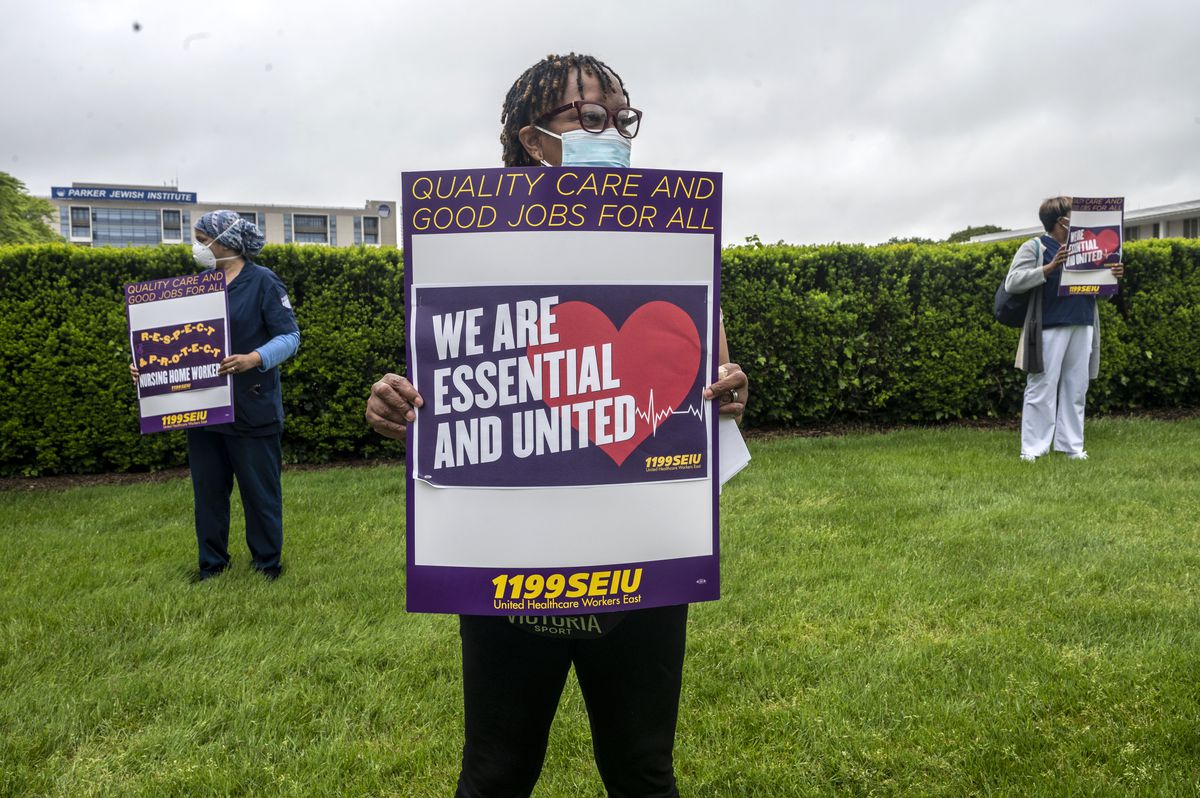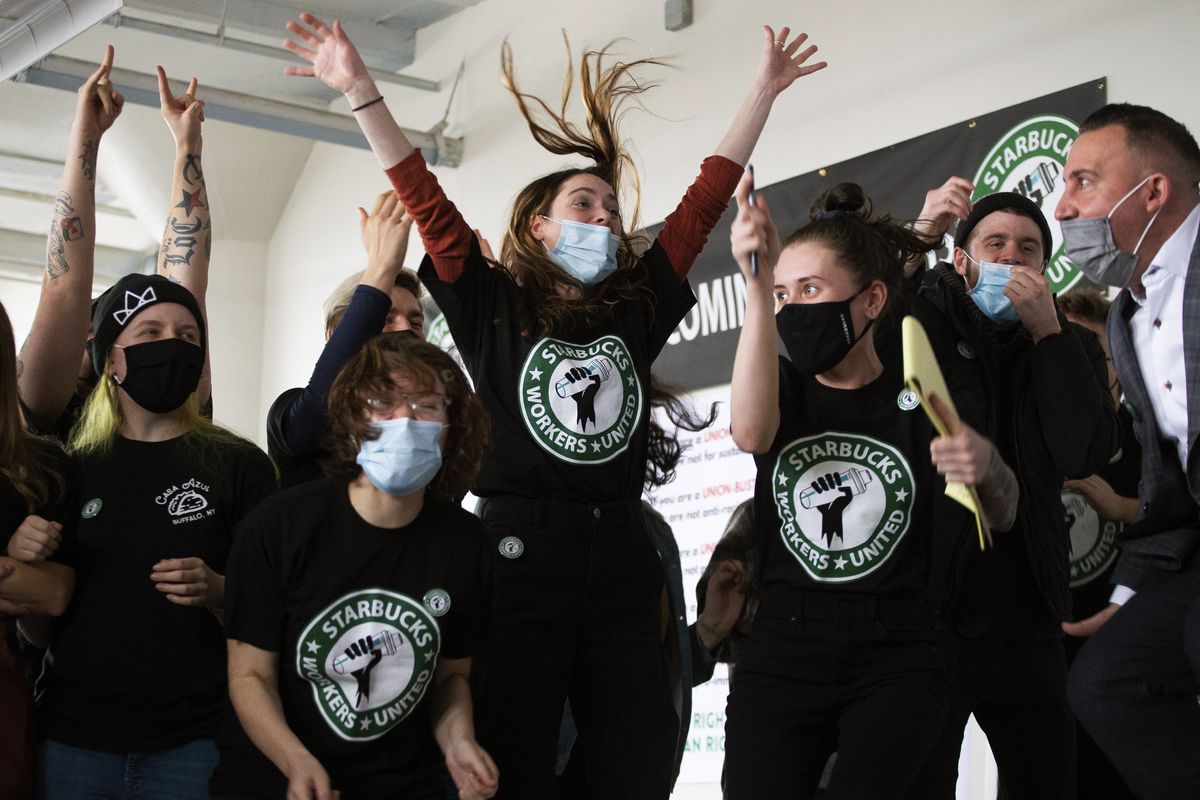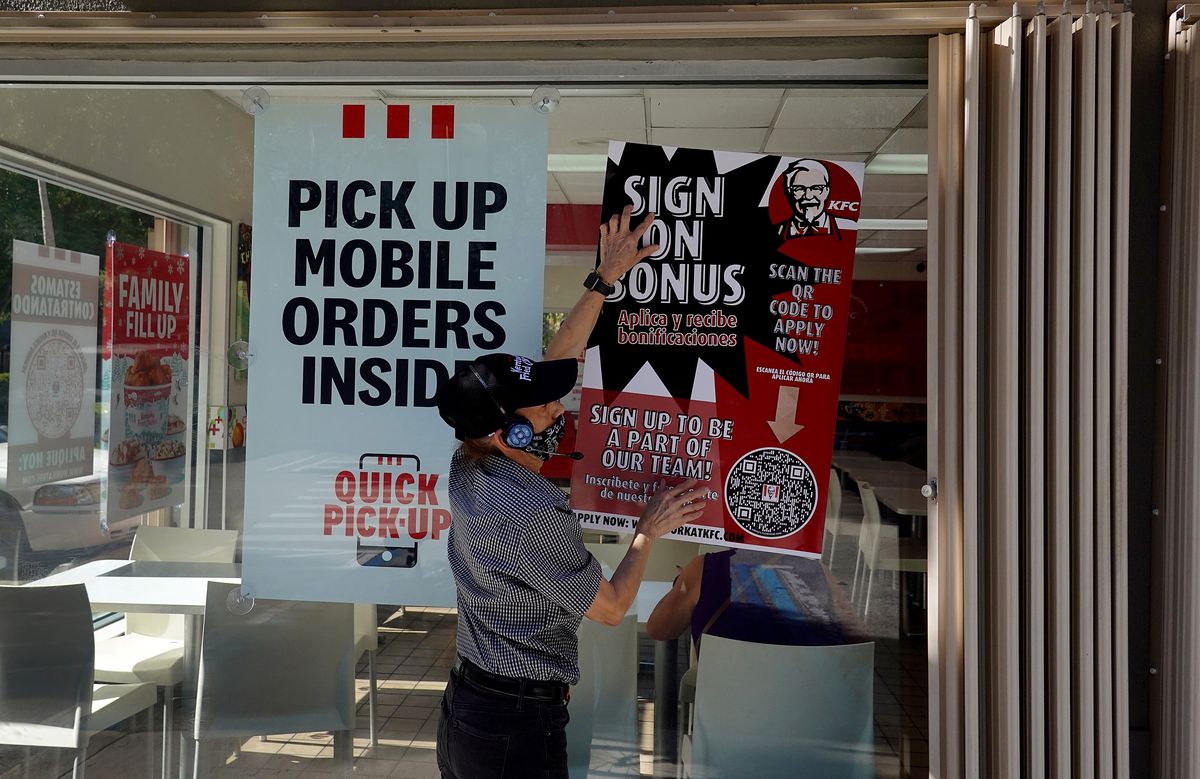More than any other time in recent memory, the present moment offers many Americans a chance to make work better.
American employees in 2022 have more leverage over their employers than they have had since the 1970s, the result of a confluence of factors. The pandemic that began in 2020 has prompted a widespread reevaluation about what place work should have in the lives of many Americans, who are known for putting in more hours than people in most other industrialized nations. There’s also been a groundswell of labor organizing that began building momentum in the last decade, due to larger trends like an aging population and growing income inequality. This movement has accelerated in the past two years as the pandemic has brought labor issues to the fore.
“I feel like there’s a change in the culture of Americans” to become more pro-labor, said Catherine Creighton, director of the Co-Lab at Cornell University’s Industrial and Labor Relations school.
“The pandemic created a huge shift where people can take the time to say, ‘What’s going on in my life?’ And it just stopped the clock for a moment, for people to say what’s important and not important,” she said.
Huge numbers of US workers have been quitting their jobs or leaving the workforce entirely, as a booming economy has created more demand for workers. This so-called Great Resignation, or Great Reshuffle, has continued even as expanded state and national unemployment benefits have run out. The ensuing labor shortages have shifted the balance of power from employers to employees — at least for those with in-demand skills or in in-demand industries.
These conditions create a fertile ground for Americans to seek higher wages, better benefits, and improved working conditions. But that leverage will only last as long as the worker shortage. Whether these improvements continue into the future for all workers will require a mix of policy change and union growth. Considering that lawmakers are currently at a standstill in the Senate over everything from the infrastructure bill to voting rights, union organizing seems like the most promising way to push these kinds of changes forward.
“I’ve been working for the union for 40 years and there’s never been a better time to organize than right now,” D. Taylor, international president of the hotel and food service worker union Unite Here, told Recode, citing a pro-labor administration, labor shortages, and growing economic inequality.
“The only fundamental way to change the economic livelihood and the rights of workers is through the union movement,” he said.
Why now is the time
Of the many effects Covid-19 has had on America, how it’s changed the way we think about work might be among the most indelible.

The pandemic made work harder for many people and highlighted the longstanding struggles of workers across many industries. The ongoing public health emergency and its ensuing repercussions for health care workers finally shined a light on the industry’s long-ignored concerns: lengthy hours, incommensurate pay for health care workers like nurses, and the dangerous but crucial nature of their work. People who serve food and sell groceries for wages that are often too low to live on sustainably suddenly became inadvertent front-line workers, heralded for their bravery in the first waves of the pandemic (but largely forgotten in the subsequent ones). And workers who toil in e-commerce warehouses or offer delivery services became integral cogs to the US economy in an extreme way, as their existing complaints about inhumane treatment in the workplace went uncorrected.
Even white-collar workers, whose labor is often higher paid and objectively safer than many blue-collar employees, are experiencing high rates of burnout and mental health issues, prompting them to question work’s meaning in their lives and whether it was ever necessary that they commute daily from their homes to work on computers somewhere else.
And now, a record number of Americans have been quitting their jobs — 4.5 million in November alone, representing 3 percent of all employment.
There are also millions more open jobs than there are Americans willing to fill them. That’s partly because there are 3.6 million fewer people on payrolls than there had been pre-pandemic. Labor force participation rates — the share of the population that’s working or looking for work — are far below pre-pandemic levels.
The reasons for the decline are myriad. Older Americans — who were already on track to depart the workforce as they age — are retiring early, with people over the age of 55 accounting for about half of the decline in the labor force participation rate since February 2020. Many women have left jobs to stay home to watch children, and as the omicron variant continues to close schools and quarantine students, it’s keeping many of these women from returning.
Some people are making ends meet by doing gig work or by starting their own businesses, which doesn’t always show up on BLS employment situation data geared to payrolls, and can lack safeguards offered by traditional jobs, such as health care. Others are living off investments in the stock market and alternative assets. People have rented out rooms in their homes or loaned their cars. They’re surviving off savings they built by staying home during the pandemic and by collecting government benefits. Many are getting by on a spouse’s income, by moving in with family, or simply by making do with less.
At the same time, the economy is booming, meaning companies would need more workers even if they weren’t quitting in unprecedented numbers. This has given workers a lot more sway in the market.
“Because of the extraordinary circumstances, we are seeing a transfer of power,” Heidi Shierholz, the president of the Economic Policy Institute, said. “We’re in a really abnormal situation.”
Businesses are having no choice but to adapt.
“When I talk to leaders of companies, they’re literally panicking because they can’t fulfill their services. They can’t deploy their product. They can’t meet their growth goals because they don’t have trained talent,” Tsedal Neeley, a professor of business administration at Harvard Business School, told Recode. She said companies that preemptively make work better for their employees — higher pay, remote flexibility, other financial and social incentives — will have a business advantage over those that wait for their workers to demand those benefits.
As this is all happening, Americans are increasingly interested in — and approving of — unions, which will be able to fight for lasting change on behalf of workers.
Kenneth Hagans, a catering employee at the Caesars Superdome stadium in New Orleans, is trying to form a union with his coworkers in order to improve pay (he makes $12.50 per hour) and to attain benefits (he doesn’t have any). Even though he said his employers are short-staffed, they have not raised pay, relying instead on temp workers.
Hagans, who is 60 years old, has health problems and works two jobs when he’d like to just work one. He believes now is the time to form a union due to the poor financial circumstances many Americans find themselves in.
“Look at what’s going on in America — it’s not just happening to me, it’s happening in this whole country — people are being paid low wages, and everything is going up,” he said. “You went to the grocery store — you see how high groceries are. You buy a car — you see it’s $5,000 or $10,000 more to buy a new car today. So the wages need to come up.”
Unite Here’s Taylor believes that such factors could lead to an increase in union membership in coming years. Membership rates have been declining for decades, but ticked up slightly in 2020 — not because union membership increased but because union members were more likely to hold on to their jobs in the recession than non-union members. 2021 numbers come out later this month.

Recently, a company-owned Starbucks in the US voted to unionize, and more locations around the country have followed suit. Other ongoing high-profile unionization efforts and actions by workers at companies as far afield as online retailer Amazon, tech review site Wirecutter, and food manufacturing company Kellogg’s could lead to even more momentum in union formation.
“It lets people know, ‘Hey, wait, I can do something about this?” Cornell’s Creighton said. “Even though it’s a handful of people, it can create a spark.”
That said, more robust union formation faces severe obstacles.
“The way the law is written and has been interpreted over the last 86 years has made it so that it’s almost impossible, in the private sector in America, to form a union,” Creighton said. “Even with all of these labor shortages, which are helping give current workers more leverage, it’s still very difficult.”
National legislation that would make it easier to unionize is languishing in the Senate. Unite Here’s Taylor thinks strong union efforts will still prevail.
“If the labor movement, if unions aggressively organize [and] are prepared to have very difficult battles with corporate America — I do [think union membership will go up],” he said. “I think it really rests in our hands, even though all the factors are there to be successful.”
What the American worker stands to gain
So far, the labor shortfall in the past two years alone has already brought significant gains to many workers.
From February 2020 to December 2021, hourly pay for non-manager positions rose 11 percent on average for all employees (about double the typical growth for the equivalent time period). Wages grew most swiftly in the lowest-paying fields, like leisure and hospitality, which has seen pay go up 14 percent over pre-pandemic levels, though it remains objectively relatively low. (Inflation has pretty much wiped out these gains.)
Some workers in leisure and hospitality, which is known for often having bad conditions in addition to low pay, are getting more regular schedules and a clearer path to advancement because employers are eager to fill empty positions.
The specter of unionization has also forced changes.
Michelle Eisen, a barista at the first unionized company-owned Starbucks, in Buffalo, New York, said that when her store filed a petition to organize a union back in August, the company began answering some of their demands by solving supply chain issues, hiring more people, and offering seniority pay.
Eisen, who spoke to me while taking a break from picketing outside her store on Friday, January 7, says there’s still a lot of work to be done. Foremost is worker health and safety: She and other workers at her store walked out earlier that week because they had been exposed to Covid-19 by a colleague and weren’t allowed to quarantine with pay if they didn’t show symptoms. Starbucks corporate has disputed this claim, saying they did offer isolation pay.
Eisen and her colleagues have been contacted by hundreds of other Starbucks employees at locations around the country, leading her to believe her store’s unionization will lead to others.
Of her own decision to form a union, she said that poor working conditions had brought her to her limit last year. “I had two options: It was to either leave a company that I’d spent 10 years with — with people that I liked, in a store that I liked, with a customer base that I really enjoyed and cared about — or we can try to make some changes from the inside,” Eisen told Recode.

These kinds of positive changes for workers aren’t limited to the service industry. Hiring bonuses and incentives have become increasingly popular. Some more progressive employers are seriously entertaining ideas about offering time off for mental health issues, shifting to four-day workweeks, and whether we should be working at all during the apocalypse. A college in Buffalo, New York, just moved to a 32-hour workweek.
Still, there is a long way to go and a lot more improvements to be made.
But the unique advantages of this time won’t necessarily last. Depending on what workers, organizers, and politicians do with this moment, we could end up with a culture of work that’s better, or not.
“Now is the time where people are realizing, due to labor shortages and what they’ve been through in the last few years, that they could have momentum to change their working lives,” Creighton said. “It’s very important we do something now. Because if not now, when?”






